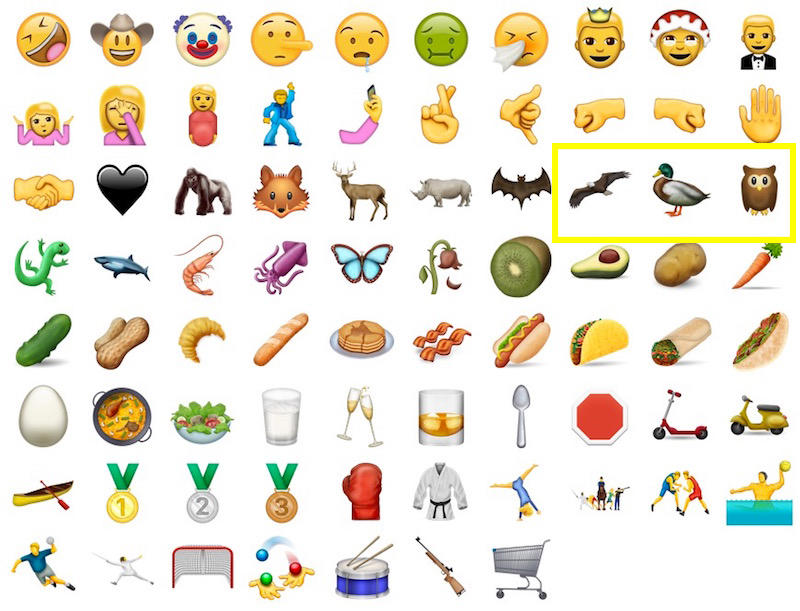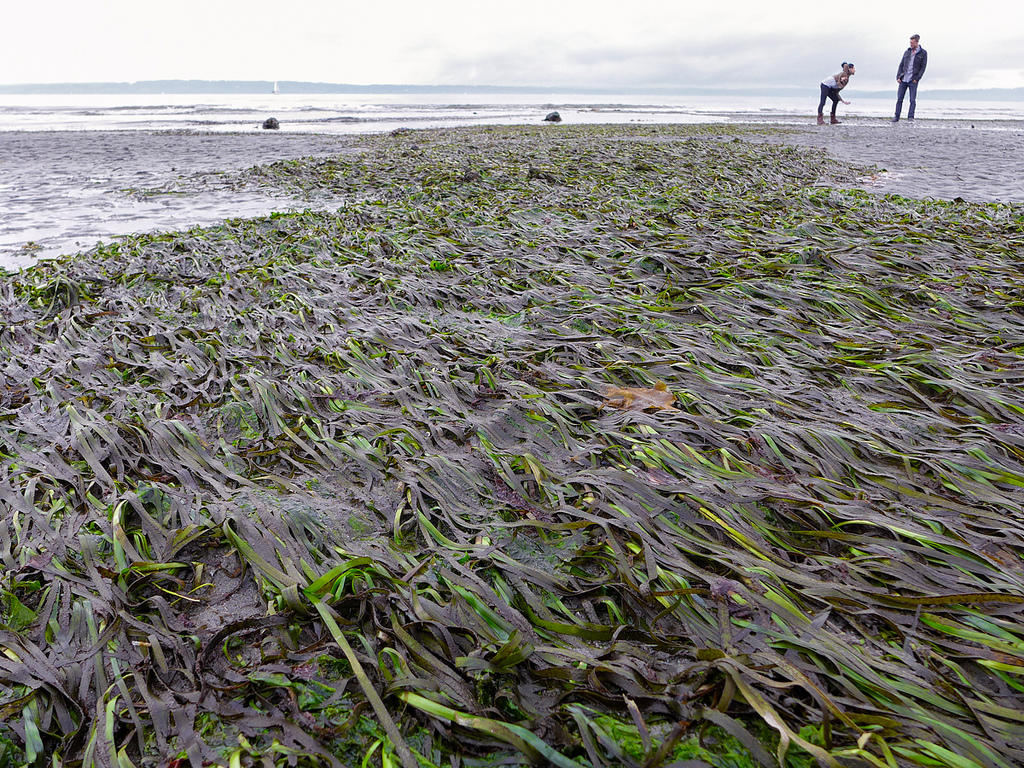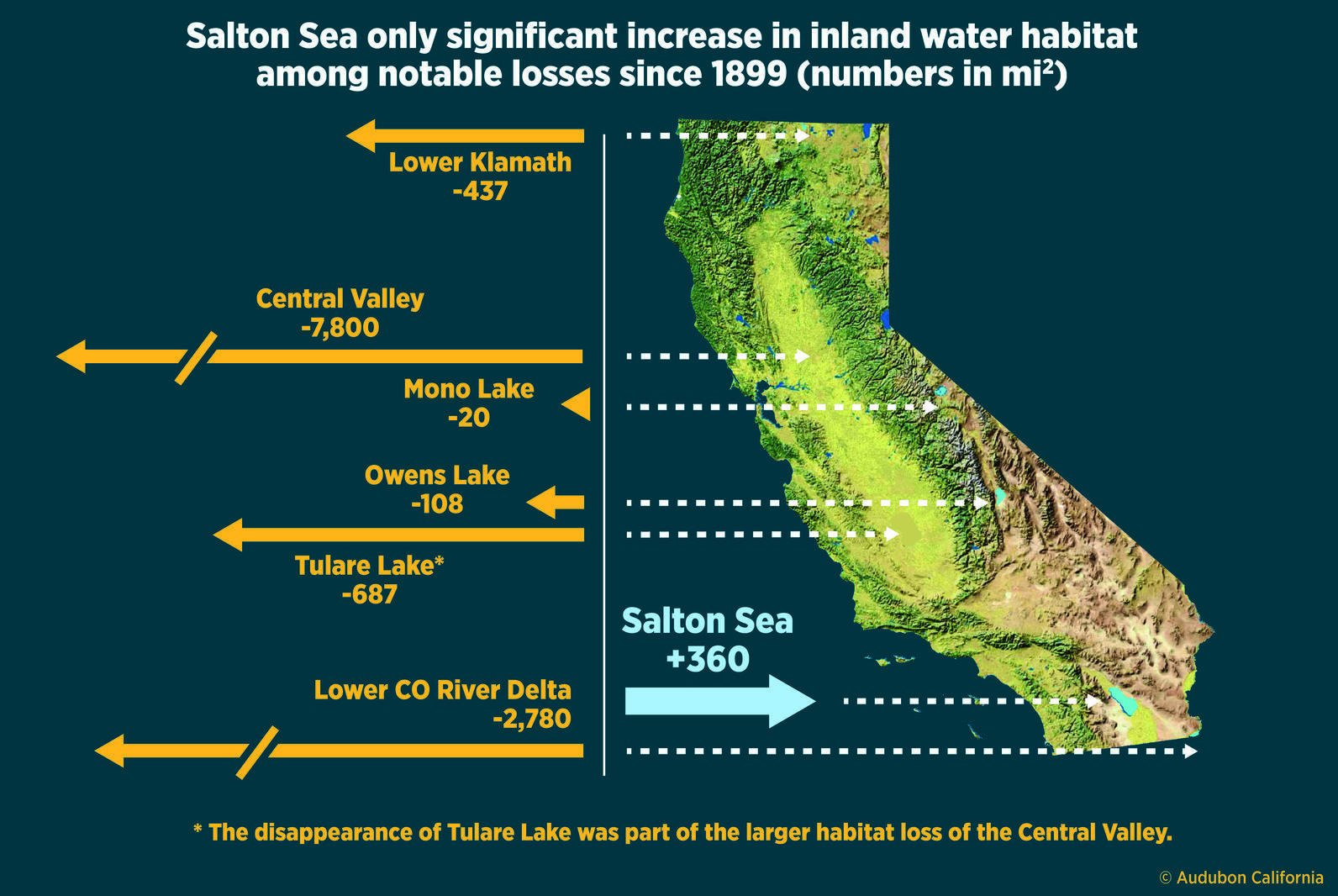Latest News and Updates from Audubon in California
California Condor. Photo: Scott Frier/USFWS

A Bald Eagle, a drake Mallard, and an unknown species of owl (screech maybe?) are among the 72 new emojis that will be coming to a desktop or mobile device soon. From a Forbes.com article on the release:
The Unicode Consortium — which is the non-profit organization that handles text expressed in digital writing systems including emoji on mobile devices — has approved 72 more emoji. On June 21st, the new set of emoji will be added to the Unicode 9.0 standard. That means Apple will likely release these new emoji in an iteration of iOS 10 sometime between September and December. Nexus devices will also likely receive the new emoji in the fall, but the rollout across all Android devices will vary based on each manufacturer’s software updates.
It's a great day for emoji-loving birders, but we have a few we'd like to suggest for the next release: California Condor, Anna's Hummingbird, California Quail, and Western Gull.
Audubon California supports Measure AA because it will be great for the millions of birds that use San Francisco Bay every year. In this video, Andrea Jones talks about her experience with wetlands restoration, and how the benefits for birds are almost immediate.

Senate Bill 1363, a bill we are sponsoring, made it through the California State Senate floor today with a vote of 26 - 11. This is great news for birds like Pacific Brant and other waterbirds that depend on a vibrant eelgrass ecosystem.

Audubon California Executive Director Brigid McCormack today writes in the Desert Sun that while the narrative around the Salton Sea is often one of environmental decay, the site remains one of the most important places for birds on the Pacific Flyway. She notes that it was created at a time when humans were wiping out natural inland water habitat:
"For birds, the creation of the Salton Sea came at just the right time – just as humans began wiping out wetland habitat throughout California.
Two years before dredging began on the Imperial Valley canal, the last remnants of Tulare Lake disappeared. Once the largest freshwater lake in the West, Tulare Lake was nearly twice the size of the Salton Sea, and anchored more than five million acres of Central Valley wetlands, 95 percent of which are now gone.
In 1906, the federal government began work on the Klamath Project, which eventually eliminated 437 square miles (80 percent) of wetland habitat in the Klamath Basin along the California/Oregon border.
Just a few years later, the Los Angeles Department of Water and Power began diverting water from the 108-square-mile Owens Lake, where Native Americans recalled a sky blackened with migratory birds, and naturalist Joseph Grinnell found great numbers of avocets, phalaropes and ducks. By 1926, Owens Lake was gone.
We were at the Facebook campus in Menlo Park today to talk about Measure AA with Save the Bay's David Lewis and Facebook's Bill Weihl. Check it out.
The Black-necked Stilt is all in for wetlands and Measure AA. Measure AA in the Bay Area will raise $500 million for wetland restoration, which is great for birds and everyone who enjoys this beautiful area. Are you in?
In case you needed another reason to attend the Audubon California Chapter Assembly, here it is: you may see Great Gray Owls cuddling in Yosemite.
This video was taken by Sea and Sage Audubon Society member and all around amazing bird photographer, Sandrine Biziaux Scherson. Here's what she had to say, "He and his mate have hatchlings they have to feed all day long. He does't want me to spot the nest, so he just stopped a few feet away from me (out of breeding season he would never stay that close) and started preening until I left. Smart guy :) California Gnatcatcher are listed as Threatened by the U.S. Fish and Wildlife Service since 1993."
Our newsletter is fun way to get our latest stories and important conservation updates from across the state.
Help secure the future for birds at risk from climate change, habitat loss and other threats. Your support will power our science, education, advocacy and on-the-ground conservation efforts.
Join the thousands of Californians that support the proposed Chuckwalla National Monument.